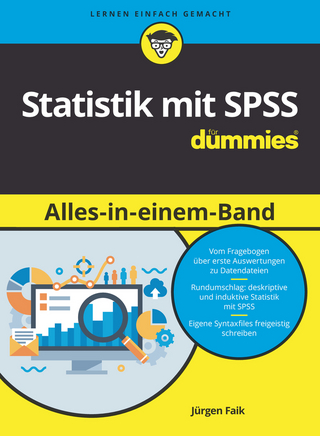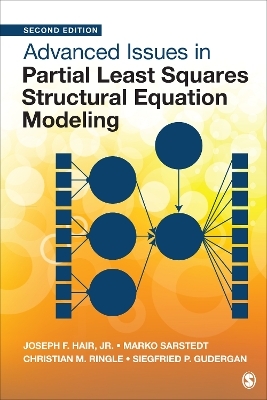
Multilevel Modeling
SAGE Publications Inc (Verlag)
978-1-5443-1929-2 (ISBN)
Multilevel Modeling: Applications in STATA®, IBM® SPSS®, SAS®, R & HLM™ provides a gentle, hands-on illustration of the most common types of multilevel modeling software, offering instructors multiple software resources for their students and an applications-based foundation for teaching multilevel modeling in the social sciences. Author G. David Garson’s step-by-step instructions for software walk readers through each package. The instructions for the different platforms allow students to get a running start using the package with which they are most familiar while the instructor can start teaching the concepts of multilevel modeling right away. Instructors will find this text serves as both a comprehensive resource for their students and a foundation for their teaching alike.
G. David Garson is a full professor of public administration at North Carolina State University, where he teaches courses on advanced research methodology, geographic information systems, information technology, e-government, and American government. In 1995 he was recipient of the Donald Campbell Award from the Policy Studies Organization, American Political Science Association, for outstanding contributions to policy research methodology and in 1997 of the Aaron Wildavsky Book Award from the same organization. In 1999 he won the Okidata Instructional Web Award from the Computers and Multimedia Section of the American Political Science Association, in 2002 received an NCSU Award for Innovative Excellence in Teaching and Learning with Technology, and in 2003 received an award "For Outstanding Teaching in Political Science" from the American Political Science Association and the National Political Science Honor Society, Pi Sigma Alpha. In 2008 the NCSU Public Administration Program was named in the top 10 PA schools in the nation in information systems management. Prof. Garson is editor of and contributor to Handbook of Public Information Systems, Third Edition.(2010); Handbook of Research on Public Information Technology (2008), Patriotic Information Systems: Privacy, Access, and Security Issues of Bush Information Policy (2008), Modern Public Information Technology Systems (2007), and author of Public Information Technology and E-Governance: Managing the Virtual State (2006), editor of Public Information Systems: Policy and Management Issues (2003), coeditor of Digital Government: Principles and Practices (2003), coauthor of Crime Mapping (2003), author of Guide to Writing Quantitative Papers, Theses, and Dissertations (Dekker, 2001), editor of Social Dimensions of Information Technology (2000), Information Technology and Computer Applications in Public Administration: Issues and Trends (1999) and is author of Neural Network Analysis for Social Scientists (1998), Computer Technology and Social Issues (1995), Geographic Databases and Analytic Mapping (1992), and is author, coauthor, editor, or coeditor of 17 other books and author or coauthor of over 50 articles. He has also created award-winning American Government computer simulations, CD-ROMs, and six web sites for Prentice-Hall and Simon & Schuster (1995-1999). For the last 28 years he has also served as editor of the Social Science Computer Review and is on the editorial board of four additional journals. His widely-cited online textbook, Statnotes: Topics in Multivariate Analysis (2006-2009), is used by over 1.5 million people a year. Professor Garson received his undergraduate degree in political science from Princeton University (1965) and his doctoral degree in government from Harvard University (1969).
Preface
Acknowledgments
About the Author
Chapter 1 • Introduction to Multilevel Modeling
Overview
What Multilevel Modeling Does
The Importance of Multilevel Theory
Types of Multilevel Data
Common Types of Multilevel Model
Mediation and Moderation Models in Multilevel Analysis
Alternative Statistical Packages
Multilevel Modeling Versus GEE
Summary
Glossary
Challenge Questions With Answers
Chapter 2 • Assumptions of Multilevel Modeling
About This Chapter
Overview
Model Specification
Construct Operationalization and Validation
Random Sampling
Sample Size
Balanced and Unbalanced Designs
Data Level
Linearity and Nonlinearity
Independence
Recursivity
Missing Data
Outliers
Centered and Standardized Data
Longitudinal Time Values
Multicollinearity
Homogeneity of Error Variance
Normally Distributed Residuals
Normal Distribution of Variables
Normal Distribution of Random Effects
Convergence
Covariance Structure Assumptions
Summary
Glossary
Challenge Questions With Answers
Chapter 3 • The Null Model
Overview
Testing the Need for Multilevel Modeling
Likelihood Ratio Tests
Partition of Variance Components
Examples
Summary
Glossary
Challenge Questions With Answers
Chapter 4 • Estimating Multilevel Models
Fixed and Random Effects
Why Not Just Use OLS Regression?
Why Not Just Use GLM (ANOVA)?
Types of Estimation
Robust and Cluster-Robust Standard Errors
Summary
Glossary
Challenge Questions With Answers
Chapter 5 • Goodness of Fit and Effect Size in Multilevel Models
Overview
Goodness of Fit Measures and Tests
Effect Size Measures
Effect Size and Endogeneity
Summary
Glossary
Challenge Questions With Answers
Chapter 6 • The Two-Level Random Intercept Model
Overview
SPSS
Stata
SAS
HLM 7
R
Summary
Glossary
Challenge Questions With Answers
Chapter 7 • The Two-Level Random Coefficients Model
Overview
SPSS
Stata
SAS
HLM 7
R
Significance (p) Values for Variance Components
Summary
Glossary
Challenge Questions With Answers
Chapter 8 • The Three-Level Unconditional Random Intercept Model with Longitudinal Data
Overview
SPSS
Stata
SAS
HLM 7
R
Summary
Glossary
Challenge Questions With Answers
Chapter 9 • Repeated Measures and Heterogeneous Variance Models
Overview
SPSS
SAS
Stata
R
HLM 7
Summary
Glossary
Challenge Questions With Answers
Chapter 10 • Residual and Influence Analysis for a Three-Level RC Model
About This Chapter
Overview
Why Residual Analysis?
Data
Model
Model Diagnostics
SAS
Stata
SPSS
HLM 7
R
Summary
Glossary
Challenge Questions With Answers
Chapter 11 • Cross-Classified Linear Mixed Models
Overview
Data
Model
Research Purpose
Stata
SPSS
SAS
HLM 7
R
Summary
Glossary
Challenge Questions With Answers
Chapter 12 • Generalized Linear Mixed Models
Overview
Estimation Methods
Data
Model
Stata
SAS
SPSS
HLM 7
R
Summary
Glossary
Challenge Questions With Answers
Appendix 1: Data Used in Examples. Refers to Student Companion Website
Appendix 2: Reporting Multilevel Results
References
Index
| Erscheinungsdatum | 10.09.2019 |
|---|---|
| Verlagsort | Thousand Oaks |
| Sprache | englisch |
| Maße | 203 x 254 mm |
| Gewicht | 1160 g |
| Themenwelt | Mathematik / Informatik ► Mathematik ► Computerprogramme / Computeralgebra |
| Sozialwissenschaften ► Politik / Verwaltung ► Politische Theorie | |
| Sozialwissenschaften ► Soziologie ► Empirische Sozialforschung | |
| ISBN-10 | 1-5443-1929-0 / 1544319290 |
| ISBN-13 | 978-1-5443-1929-2 / 9781544319292 |
| Zustand | Neuware |
| Haben Sie eine Frage zum Produkt? |
aus dem Bereich


